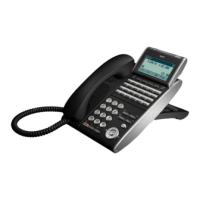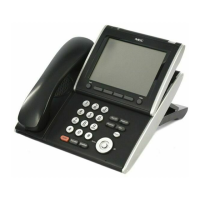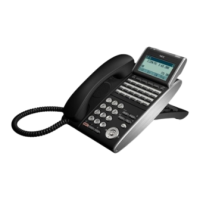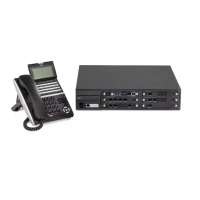• When defining trunks as DID or DID Mode in PRG 22-02-01, DID translation (PRG 22-11 or PRG
22-17) must be used, even if the incoming digits match the extension number.
• When using DID Call by Time Schedule and breaking out the Time Patterns, set the start time to
00:00 and end time to 00:00 for this feature to operate correctly. Refer to DID Call by Time
Schedule on page 1-199 for more details.
• DID Call by Time Schedule Priority is given to the pattern that is set manually. However, when a
time pattern changes with the time schedules set in PRG 22-17, the pattern applied by the Manual
change is canceled and the Time Pattern is given priority.
• When Transfer Operation Mode is set to busy, call queuing must be turned off for it to work.
Default Settings
Disabled
Related Features
Central Office Calls, Answering
Direct Inward Line (DIL)
Direct Inward System Access (DISA)
Off-Hook Signaling
Paging, External
Programmable Function Keys
Station Message Detail Recording
Transfer
Guide to Feature Programming
Program Num-
ber
Program Name Default
10-03-01 ETU Setup Refer to Programming Manual.
14-05-01 Trunk Group - Trunk group Number Trunk Port 1~126 = Priority 1~126
(SL1000)
Trunk Port 1~96 = Priority 1~96
(SL1100)
15-07-01 Programmable Function Keys Refer to Programming Manual.
20-06-01 Class of Service for Extensions All extension port = Class 1
20-09-01 Class of Service Options (Incoming Call Service) - Second
Call for DID/DISA/DIL Override
COS 01~15 = 0
20-13-23 Class of Service Options (Supplementary Service) - Display
the Reason for Transfer
COS 01~15 = 0
21-01-02 System Options for Outgoing Calls - Intercom Interdigit Time 10 (seconds)
22-01-06 System Options for Incoming Calls - DID Ring-No-Answer
Time
20 (seconds)
22-02-01 Incoming Call Trunk Setup 0
22-04-01 Incoming Extension Ring Group Assignment Extension 200 (first port)
ISSUE 2.0 SL1000/SL1100
Features and Specifications Manual 1-203
D

